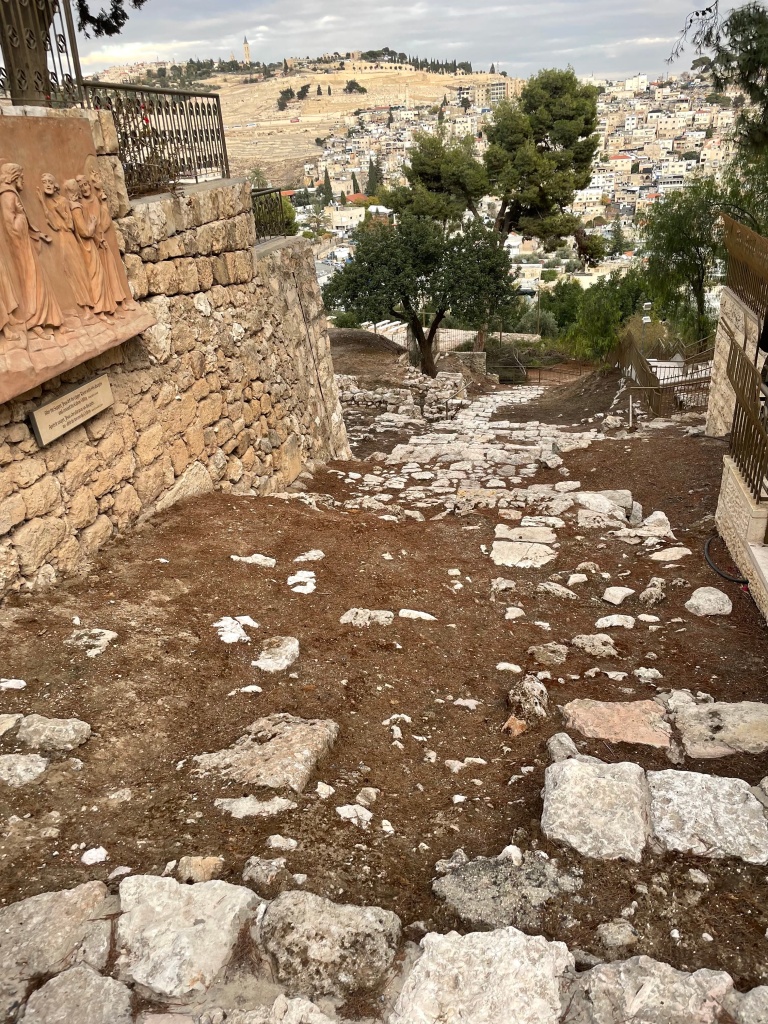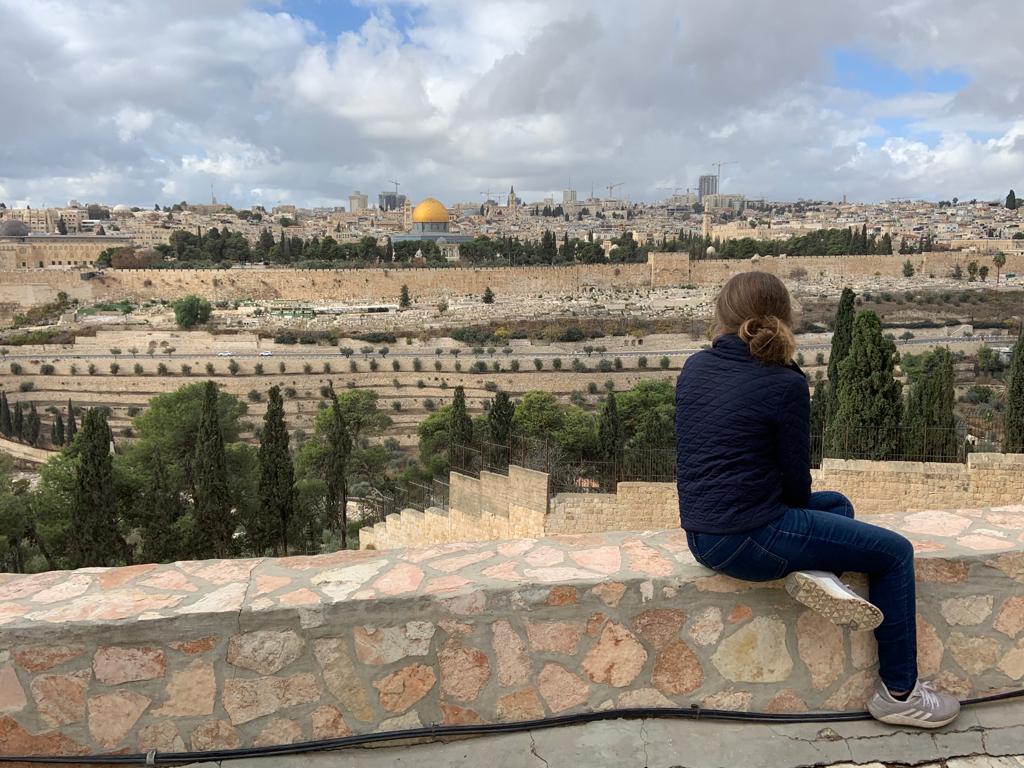The Chosen and Eyewitness Testimony
I watched The Chosen Christmas special episode this past Sunday. Although I could have done without the long musical intro, and setting aside evangelical vs. Catholic understandings of Mary’s experiences of the virgin birth (for a Catholic perspective, see here), I wanted to note something I really love that this series does in this episode, as well as in the first episode of season 2: the writers try to imagine not only the experiences of the first followers of Jesus when they met him and followed him during his ministry; they also try to imagine what it might have looked like for these disciples after the death, resurrection, and ascension, as they began translating their experiences of Jesus into written accounts that later would be gathered into the New Testament Scriptures. It’s something that we do not consider enough.
For me, the best part of the Christmas episode was the way in which the writers imagined how details of the Christmas story came down to us. There is a beautiful focus on the Magnificat (Lk: 1:46-55) and Mary and Joseph’s encounters with the “messengers” (Lk: 1:26-48; Mt: 1:18-24) and the fact that Jesus, like a spotless lamb set aside by shepherds for sacrifice in the Temple, was “wrapped in swaddling clothes” by his mother (Lk: 2:7). These are details which, if we believe them to be accurate in any meaningful sense, must have been reported to the evangelist Luke ultimately by Mary herself.
The Chosen writers have Mary Magdalene come to visit the mother of the Lord shortly before she dies to be given the privilege of carefully writing down the words of the Magnificat and delivering them to Luke on Our Lady’s behalf.

Obviously, we have no way of knowing if this is how the information was transmitted to Luke, and perhaps this scenario is not very likely, but there is nevertheless something very beautiful about the show emphasizing Mary Magdalene’s role as “apostle to the apostles” even years after the resurrection and her initial announcement to them of the good news (cf. Mark 16:9-11, Matthew 28:1-10, Luke 24:10-11, John 20:1-18).
It is clear to me, regardless, that there must have been a special relationship between Mary the mother of Jesus and Mary Magdalene — as they were profoundly united together by witnessing the suffering of Jesus and standing beneath his cross as he died (John 19:25). In the episode, Mary Magdalene movingly calls Mary “Mother,” and the mother of Jesus says that Mary Magdalene has always been “like a daughter” to her. Mary Magdalene’s role as one of the very first witnesses of the resurrection would also, no doubt, have united her in a special way to Mother Mary, who accompanied the apostles “and some women” in prayer in the Upper Room as they awaited the coming of the Holy Spirit at Pentecost (Acts 1:13-14).

Unfortunately, much of the scholarship on these questions since the 19th century (and a disheartening view into a lot of Catholic seminary formation) is well summarized by Father Casey Cole, OFM on his Youtube video here. He critiques the show because it imagines the apostles John and Matthew taking notes on their experiences with Jesus: “[the creators] treat the Gospels as if they were eye-witness accounts, written down as they were happening,” he says, disapprovingly. Such an approach, he contends, causes scripture “to be treated as nothing more than a literal, entirely straightforward account of events.” Clearly, he is thinking about sola scriptura and un-nuanced views of the inerrancy of scripture here. But he also proffers the common view that the Gospel writers were primarily “theologians”, not historians, interested in portraying Jesus according to the needs of their “faith communities”—and not very interested with factual accuracy at all.
I’m always puzzled by this thesis, as if people 2,000 years ago were so unlike people today that they were mysteriously un-curious about facts. What the Chosen series does well is to help us imagine these people as if they were real human beings, and consider how they might respond to the amazing events they experienced.
The evangelist Luke himself, at the beginning of his Gospel, actually claims to be transmitting the accounts of eyewitnesses and seems rather intent on accuracy:
Since many have undertaken to compile a narrative of the events that have been fulfilled among us, just as those who were eyewitnesses from the beginning and ministers of the word have handed them down to us, I too have decided, after investigating everything accurately anew, to write it down in an orderly sequence for you, most excellent Theophilus, so that you may realize the certainty of the teachings you have received. (Luke 1:1-4)
Anglican priest and theologian Richard Bauckham, in his brilliant and well-researched work, Jesus and the Eyewitnesses, offers a corrective view on the origin of the Gospels. Here’s a taste, but if you’re interested in this topic I highly recommend diving into the whole work:
The full reality of Jesus as he historically was is not, of course, accessible to us. The world itself could not contain the books that would be needed to record even all that was empirically observable about Jesus, as the closing verse of the Gospel of John puts it. Like any other part of history, the Jesus who lived in first-century Palestine is knowable only through the evidence that has survived. We could therefore use the phrase “the historical Jesus” to mean, not all that Jesus was, but Jesus insofar as his historical reality is accessible to us. But here we reach the crucial methodological problem. For Christian faith this Jesus, the earthly Jesus as we can know him, is the Jesus of the canonical Gospels, Jesus as Matthew, Mark, Luke, and John recount and portray him. There are difficulties, of course, in the fact that these four accounts of Jesus differ, but there is no doubt that the Jesus of the church’s faith through the centuries has been a Jesus found in these Gospels. That means that Christian faith has trusted these texts. Christian faith has trusted that in these texts we encounter the real Jesus, and it is hard to see how Christian faith and theology can work with a radically distrusting attitude to the Gospels.
Yet everything changes when historians suspect that these texts may be hiding the real Jesus from us, at best because they give us the historical Jesus filtered through the spectacles of early Christian faith, at worst because much of what they tell us is a Jesus constructed by the needs and interests of various groups in the early church. Then that phrase “the historical Jesus” comes to mean, not the Jesus of the Gospels, but the allegedly real Jesus behind the Gospels, the Jesus the historian must reconstruct by subjecting the Gospels to ruthlessly objective (so it is claimed) scrutiny. It is essential to realize that this is not just treating the Gospels as historical evidence. It is the application of a methodological skepticism that must test every aspect of the evidence so that what the historian establishes is not believable because the Gospels tell us it is, but because the historian has independently verified it. The result of such work is inevitably not one historical Jesus, but many.
[…]
All history — meaning all that historians write, all historiography — is an inextricable combination of fact and interpretation, the empirically observable and the intuited or constructed meaning. […]
I suggest that we need to recover the sense in which the Gospels are testimony. This does not mean that they are testimony rather than history. It means that the kind of historiography they are is testimony. An irreducible feature of testimony as a form of human utterance is that it asks to be trusted. This need not mean that it asks to be trusted uncritically, but it does mean that testimony should not be treated as credible only to the extent that it can be independently verified. There can be good reasons for trusting or distrusting a witness, but these are precisely reasons for trusting or distrusting. Trusting testimony is not an irrational act of faith that leaves critical rationality aside; it is, on the contrary, the rationally appropriate way of responding to authentic testimony. Gospels understood as testimony are the entirely appropriate means of access to the historical reality of Jesus. It is true that a powerful trend in the modern development of critical historical philosophy and method finds trusting testimony a stumbling-block in the way of the historian’s autonomous access to truth that she or he can verify independently. But it is also a rather neglected fact that all history, like all knowledge, relies on testimony. In the case of some kinds of historical event this is especially true, indeed obvious. In the last chapter we shall consider a remarkable modern instance, the Holocaust, where testimony is indispensable for adequate historical access to the events. We need to recognize that, historically speaking, testimony is a unique and uniquely valuable means of access to historical reality.
from Richard Bauckham, Jesus and the Eyewitnesses, Chapter 1
For a more direct rebuttal of Father Cole’s take, see Catholic apologist Trent Horn’s response here.
Why does our view of the Gospels as transmission of eyewitness testimony matter? It matters for much the same reason that going to specific places in the Holy Land does. The reason the ancient Church preserved these places and wrote these Gospels is because it was convinced that something utterly unthinkable actually happened. Christianity is not a literary story, or vague theological reflection cobbled together by the needs of various “faith communities.” It is a testimony about real events, or it is nothing. To appropriate Flannery O’Connor’s famous quip on the Eucharist, “if it’s just a symbol, then to hell with it.”
I appreciate that The Chosen show takes the historicity of the Gospels seriously, and as a work of art helps us enter imaginatively into the lives of these people. It seems to really embody St. Ignatius’ teaching on imaginative prayer. We are human, so abstract ideas are not enough to nourish faith. God himself, having made us, knew this and took on flesh and bones to meet us in our poverty. We need to set aside abstracting the Gospel stories into oblivion in order to meet him in his.






